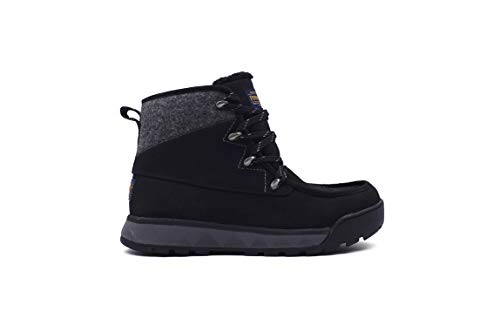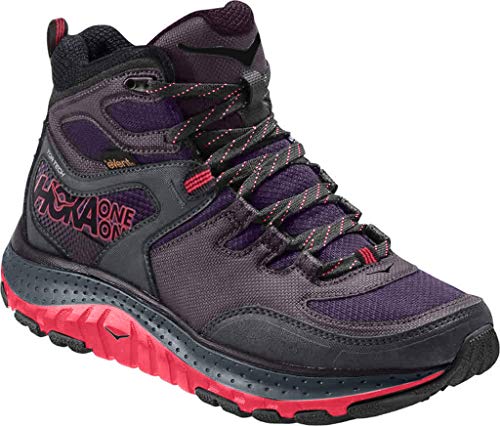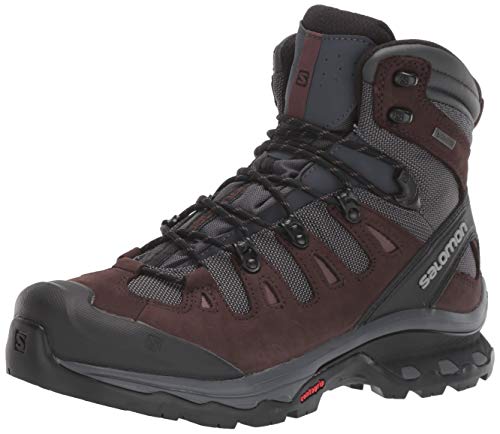Best Women’s Hiking Boots (Reviews) for Morton’s Neuroma
Morton’s Neuroma is a foot issue that causes pain and makes you feel like standing on a tiny rick or like a fold in your sock. Nerve tissue in the foot becomes irritated, thickening, and causing the pain in your foot. The problem is so severe that it may numb your toes, affecting your walking and general foot comfort.
Even if women are more prone to develop Morton’s Neuroma because of the high heels, all people with various foot problems (high arches, hammertoes, bunions, or flat feet) may deal with Morton’s Neuroma at some point. Even if strenuous activities like hiking will put a lot of pressure on your already aching feet, the proper pair of hiking boots can decrease the discomfort for enjoying it to the fullest. Expansive toe room with good arch support for reducing the nerve pressure is some of the features to look for in boots for hiking when you have Morton’s Neuroma.
Top Women’s Hiking Boots for Morton’s Neuroma
1. Pendleton Women’s Torngat Trail Hiking Boot Wool and Waterproof
Even if the Pendleton Women’s Torngat Trail Hiking Boot Wool and Waterproof don’t have the typical appearance of hiking boots, but they’re just as reliable as rugged-looking hiking boots.

See reviews and pricing on Amazon
The boots are made with waterproof leather that conforms to your foot’s shape with each wear while blocking wet elements from getting inside the shoes. The Pendleton wool upper makes the boots warm and a dependable choice for winter hikes. The waterproof bootie build improves the resistance to water and elements.
The boots’ comprehensive build is another reason why the shoes are a safe choice for Morton’s Neuroma. The molded EVA sock liner is comfortable, absorbing shock from hiking and reducing the pressure any pain on your toes. The spacious toe room ensures a comfortable fit for the toes, so they don’t get cramped even at the end of the day after your feet have swollen.
The boots have a flexible construction, and the minimal drop alleviates the pain. The stylish moc toe is beautiful and could seal the deal for some. The soft faux shearling collar lining is both functional (improves comfort) and aesthetical. The wool has natural antimicrobial and moisture-wicking abilities, so the boots keep your feet warm without causing a toasty feel. The rubber sole is rigid and gives traction in the snow, and the shoes are versatile. Even if they’re not the best choice for the most technical hikes, they are a safe buy when you’re dealing with Morton’s Neuroma.
2. HOKA ONE ONE Women’s Tor Tech Mid Waterproof Hiking
Women hikers who dare to take the more technical hikes, even when they deal with aching feet, should take the plunge with the HOKA ONE ONE Women’s Tor Tech Mid Waterproof Hiking.

See reviews and pricing on Amazon
The boots are made with long-lasting textile upper, which will feel comfortable and expand for the best comfort throughout the day. The upper body works perfectly with the dynamic RMAT midsole, ensuring responsiveness without adding weight. The upper part is waterproof, but the event membranes provide adequate ventilation. Therefore, the boots are waterproof and breathable, without being too restrictive over your foot and aggravating your pain.
The tongue is gusseted, so it will keep the debris and dirt from getting inside the boots. The Hoka One One’s RMAT was used in the Dynamic Midfoot transition zone for a softer and smoother transition, alleviating discomfort.
The boots provide good arch support, and the collar and tongue are softly padded for soft support in the ankle area. Stability isn’t skipped, and the shoes come with a rigid sole. The multi-directional rubber lugs are sticky so that grip and traction are sufficient on various trails.
3. Salomon Women’s Quest 4d 3 GTX W Backpacking
Just because you’re struggling from Morton’s Neuroma doesn’t mean you should hold back from taking the most challenging and rugged trails. Salomon Women’s Quest 4d 3 GTX W Backpacking is loaded with great features for challenging hikes, but also with the parts you need for comfortable hikes.

See reviews and pricing on Amazon
The toe room is very spacious, allowing you even to wiggle your toes. It’s reinforced toe cap on the boots so that the risk of stone bruising is significantly reduced. The lacing system (sensitive) effectively allows you to tie the laces as loose as you need for better comfort throughout your hiking. As the upper body is made with leather and mesh inserts, it will feel comfortable and soft the more you wear the boots.
The boots have a rugged appearance, but you’ll be surprised to find out that they’re lightweight. They’re waterproof and breathable as they feature the Gore-Tex membrane. The mudguard will add protection on muddy trails, improving your stability. The medial and lateral areas of the boots are entirely protected, so your feet will feel less strain while hiking. Plus, the ContaGrip outsole offers grip and traction on most challenging trails, wet and muddy tracks included.
The boots are light and padded with adaptive technology for increased comfort while hiking. The collar and tongue are softly cushioned for ankle support, and the shoes work for hikers with Morton’s Neuroma. If you’re a newbie, the boots may be too much for your skills, but avid hikers should pay the extra buck for these boots.
How should you choose hiking boots when dealing with Morton’s Neuroma?
Even if Morton’s Neuroma isn’t a life-threatening condition, it can impact the quality of your life, especially if you don’t know which footwear to buy. It can be even more difficult when you’re hiking, as you also have to watch for the features that make the boots reliable for hiking. Here is the information to help you select the best pair of hiking boots when struggling with Morton’s Neuroma.
Wide toe box
As the pain comes mostly from the toes, the hiking boots should come with a generous toe room. Your toes shouldn’t be cramped at any moment, and comfortable toes will always decrease the pain. The toe room should also be reinforced so that the pressure on your toes while descending is reduced. With a rubberized toe cap, the toes are protected, and the risk of stone bruising or from impact, roots, or rocks is lower.
Effective lace-up design
Look for boots with numerous lace holes/hooks to get the most comfortable fit for the shoes. It’s not wise to lace the forefoot part of your shoes very tight, as you need to provide comfort in that area.
Some hiking boots come with two-zone lacing, so you may easily have a looser lacing in the forefoot but a tighter lacing at the ankles, where you need a snug fit for best ankle support.
D-rings and speed hooks are also features that help you get the superior fit you need for your feet.
Materials
Getting comfort without losing support is difficult, but some aspects will help you find the proper pair of boots. Materials that are soft and expandable will provide better comfort for your aching feet.
Hiking boots made with soft suede/nubuck leather and mesh inserts present a better ability to adjust to your foot’s shape for less painful wear. Full-grain leather will conform to your foot’s form the best way, but it takes time until it softens enough for not causing discomfort.
Support
Some features are evident for comfort, whereas others are less noticeable. When buying hiking boots, the best way to tell if they are supportive is by trying the shoes. Softly padded collar and tongue are essential for ankle support, but you still need to put on the boots to see how the arch supports your feet.
Stability shank, EVA midsole, softly padded forefoot are features that count for support and stability. The midsole can absorb the most shock from hiking, but it isn’t easy to see its efficiency by looking at the boots.
Stability
Every feature that will absorb shock, reduce pressure, and provide stability for the foot will count for your comfort. The boots’ sole should be rigid and thick enough so that your toes and underfoot feel less pressure from impact. Vibram sole is the most common choice, as it’s tough without affecting the flexibility you need while hiking.


